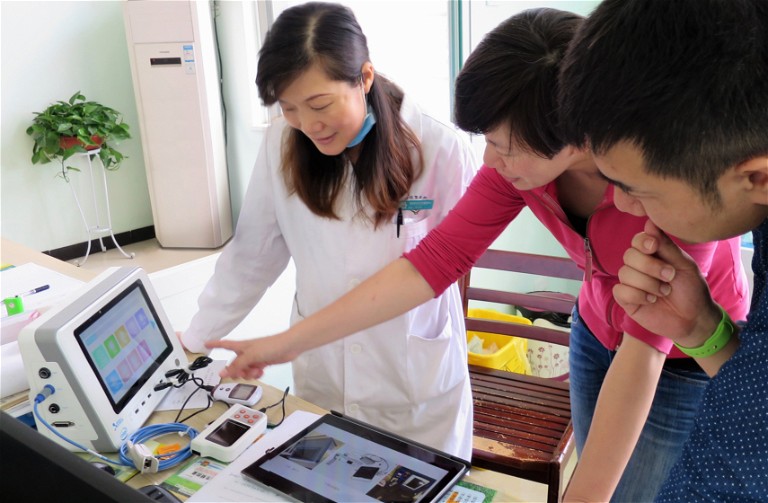Human-Centred Design
Human-Centred Design: From Inception to Integration
IPT sat down with Dr Chris Vincent at PDD, to understand more about the digital innovations that are leading design and whether technologies like Extended Reality (XR) can be beneficial to the process
IPT: What are the benefits of utilising a human-centred design (HCD) approach over others?
Dr Chris Vincent: Whilst the exact approach depends on the problem being addressed and what the end goal is, the benefits of user participation in research cannot be denied. From understanding underlying needs and empowering individuals to act on a problem, to checking what ideas and solutions are appropriate, HCD is a method that can be applied universally in a relatively quick and flexible way.
Similarly, what are the benefits of embracing emerging technologies, such as XR, and how might these benefits vary for the different stakeholders – will a consumer see the same benefits as the clinician, or the company?
It is important that people connect with the world around them in a deep and meaningful way. Technology can help achieve this in a range of ways, including the broadening of access and availability of medical advice, and reducing the need to visit a hospital.
This is why we spend a lot of time testing and evaluating technology – our job is to flag these instances relatively early on, so that benefits are shared broadly and consumers are not disadvantaged.

What emerging technologies are broadening horizons for pharma companies?
Digital health in general is disrupting the industry, as a result of rising costs, evolving service models, and a focus on preventative measures. Many pharma companies are moving beyond a commoditisation model and offering value beyond a drug or device, which requires a different way of working, considering health economics, linkages, digital platforms, and cloud-based technologies.
In my view, the most important thing is that pharma companies don’t just focus on connecting or digitising their existing systems. This can provide value, but often misses the point; technology that is based on an underpinning behavioural model (e.g., behaviour change) is more impactful.
Therefore, the question should not be what emerging technologies are broadening horizons – it should be what emerging theoretical models are broadening horizons.
How might opinion – of consumers, patients, and clinicians – impact the adoption of XR and similar approaches to healthcare?
It’s important to consider other large-scale rollouts of digital health technology, with the most immediate being healthcare apps. In this case, there were some concerns about privacy, as well as quality, reliability, and safety. In extreme examples, apps were made available and then subsequently withdrawn. Over time, standards and assessment frameworks were created that began to alleviate concerns, with subsequent acceptance coming as a result of the rise of other technologies, including mobile phones and the acceleration of tech in other sectors.

With the prevalence of medical services and devices relying on the internet, such as those required to utilise XR, might this create a barrier to entry for some patients? How could this be overcome?
There was concern during the early stages of mobile health regarding the availability of mobile phone networks in rural areas, or access in low- to middle-income countries. This turned out to be less of an issue than anticipated. There are, of course, other forms of digital exclusion, including cost, usability, and inclusivity of the design. However, as an industry, we are no stranger to addressing these issues, and a similar process would apply as it does for other forms of medical technology.
What are some key elements that researchers or clinicians hoping to adopt emerging technologies should be aware of?
It is important that theory guides this endeavour. The product or service should have some underpinning model of behaviour change. There should also be an evaluation theory, both in terms of how some of the aforementioned questions can be addressed, and also how the system will be evolved and adapted as technology changes alongside the world around it.
This is quite complicated, and an area where HCD needs to be supplemented – even with the best minds on the planet involved in a workshop, it does not necessarily substitute for some of the large-scale data analysis and modelling that goes on across technology companies.
That said, in recent months, there has been a shifting focus towards more established and traditional methods. The physical side of things is still really important, and healthcare is an area where the cost of change is large, which therefore means the value proposition is very important. There are some very basic but powerful innovations, such as prefilled syringes, that could disrupt the industry in similar ways and, of course, a theoretical and behavioural model can inform this type of technology in exactly the same way.

Dr Chris Vincent, Principal – Human Factors and Ergonomics (HFE) Sector Lead Healthcare at PDD. Chris was awarded his PhD in 2005. He previously worked at the University College London Interaction Centre as a postdoctoral research associate.
During that time, he worked on the Engineering and Physical Sciences Research Council funded CHI+MED research project, investigating ways to make medical products safer. This involves understanding the relationship between human factors, human error, and interactive device design. He has experience relating to both healthcare and aerospace.
Chris provides tools and techniques to optimise the safety and usability of equipment (e.g., personas, scenarios, safety cases, design guidance). He has published research relating to design for safety and usability, representation of complex systems (e.g., distributed cognition) and definition of human capabilities relating to visual perception/cognitive psychology.